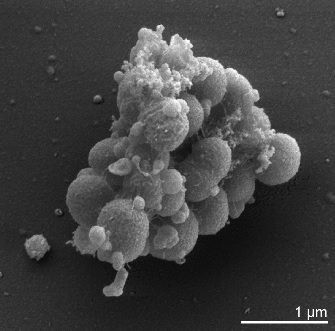Porphyromonas gingivalis: Difference between revisions
| Line 5: | Line 5: | ||
===Higher order taxa=== | ===Higher order taxa=== | ||
Bacteria (domain) - | |||
Bacteroidetes (phylum) - | |||
Bacteroidia (class) - | |||
Bacteroidales (order) - | |||
<ref | Porphyromonadaceae (family) - | ||
''Porphyromonas'' (genus) | |||
<ref>NCBI TB</ref><ref>StrainInfo.net</ref> | |||
===Species=== | ===Species=== | ||
Revision as of 19:28, 22 September 2016
Ron Ramsay, Bench C, 23rd September, 2016 [1]
Classification
Higher order taxa
Bacteria (domain) - Bacteroidetes (phylum) - Bacteroidia (class) - Bacteroidales (order) - Porphyromonadaceae (family) - Porphyromonas (genus) [2][3]
Species
Species name and type strain (consult LPSN http://www.bacterio.net/index.html for this information)
Description and significance
Give a general description of the species (e.g. where/when was it first discovered, where is it commonly found, has it been cultured, functional role, type of bacterium [Gram+/-], morphology, etc.) and explain why it is important to study this microorganism. Examples of citations [1], [2]
Etymology: N.L. fem. dim. n. Veillonella, named after Adrien Veillon, the French microbiologist who isolated the type species.
Genome structure
Select a strain for which genome information (e.g. size, plasmids, distinct genes, etc.) is available.
Cell structure and metabolism
Cell wall, biofilm formation, motility, metabolic functions.
Ecology
Aerobe/anaerobe, habitat (location in the oral cavity, potential other environments) and microbe/host interactions.
Pathology
Do these microorganisms cause disease in the oral cavity or elsewhere?
Application to biotechnology
Bioengineering, biotechnologically relevant enzyme/compound production, drug targets,…
Current research
Summarise some of the most recent discoveries regarding this species.
References
References examples
References
Cite error: <ref> tag with name "greengenes" defined in <references> is not used in prior text.
Cite error: <ref> tag defined in <references> has no name attribute.
This page is written by Ron Ramsay for the MICR3004 course, Semester 2, 2016

